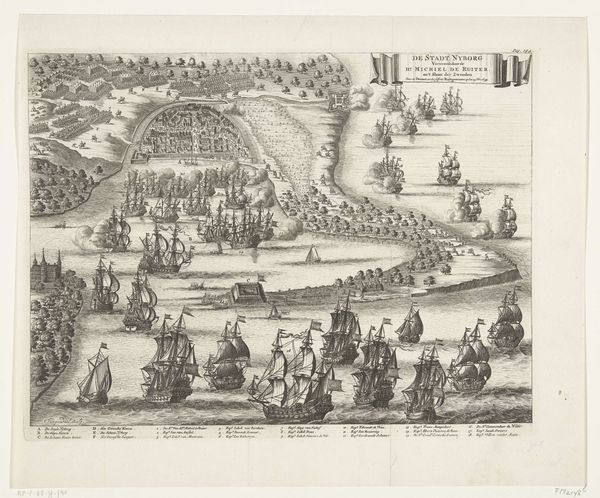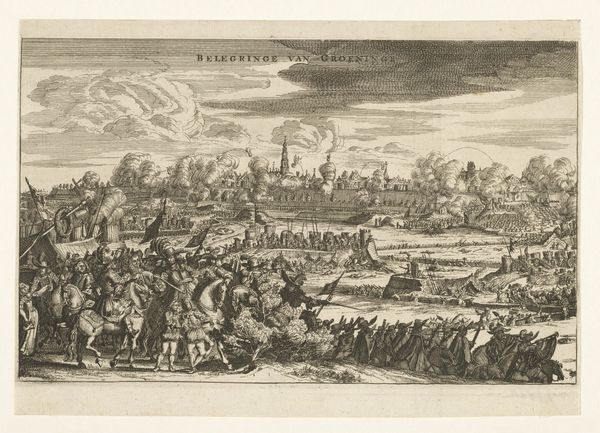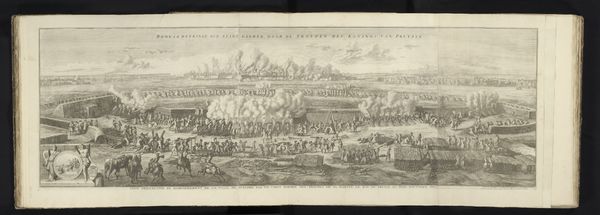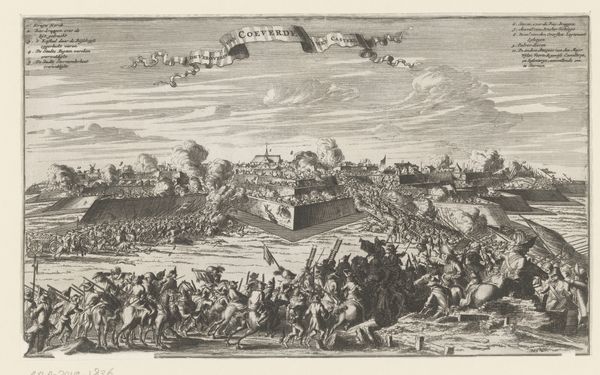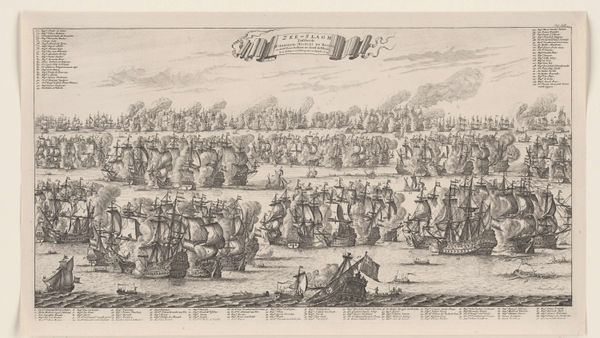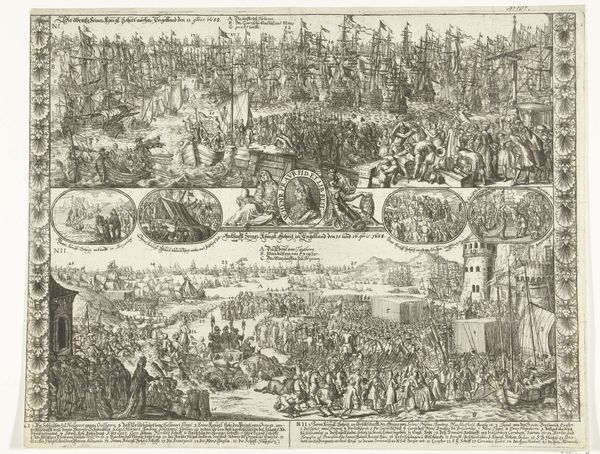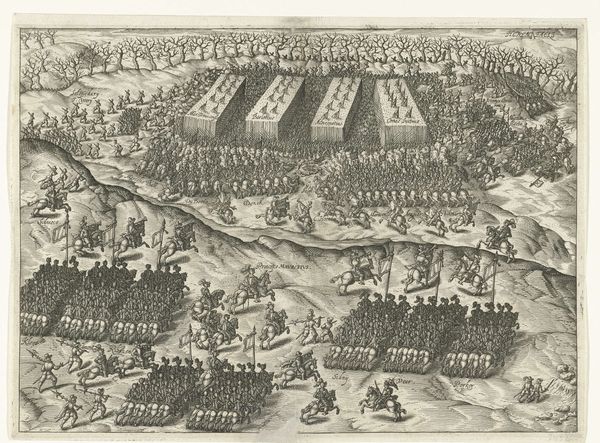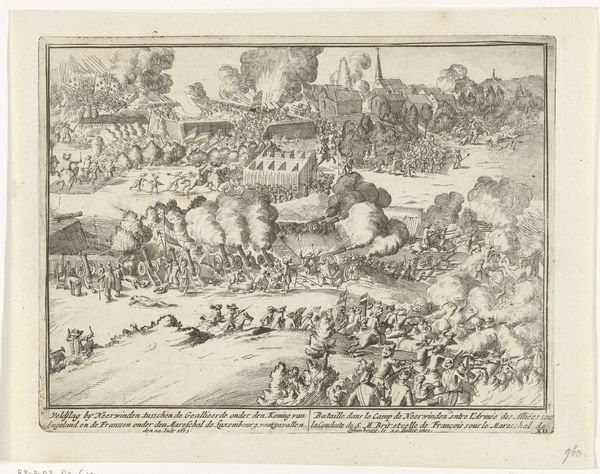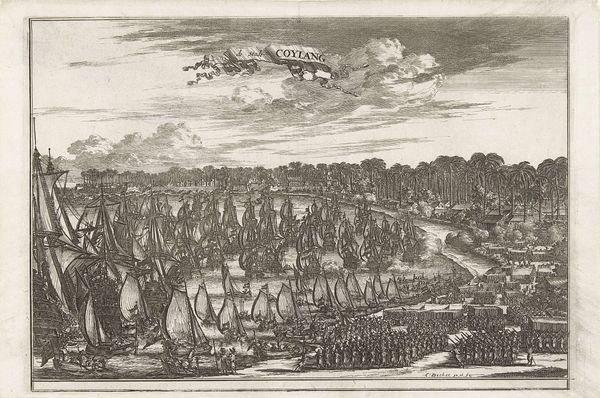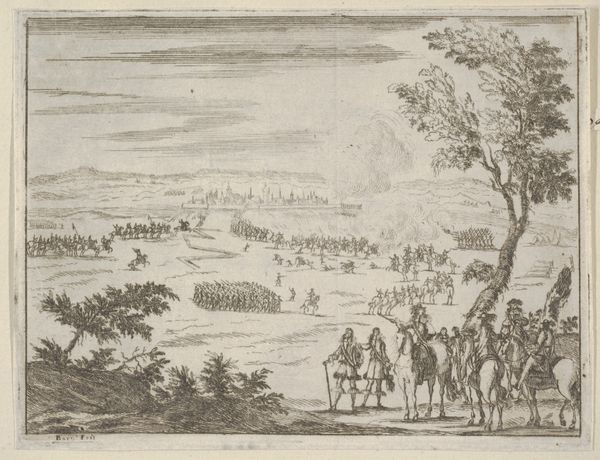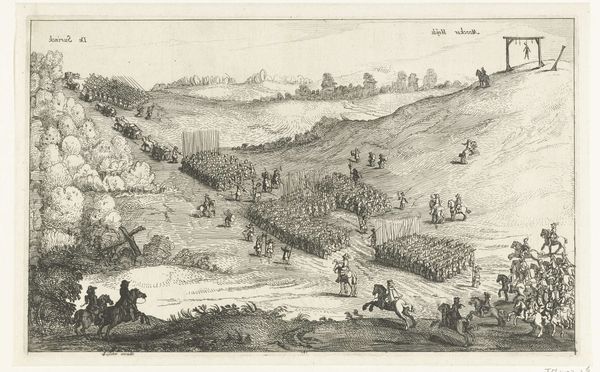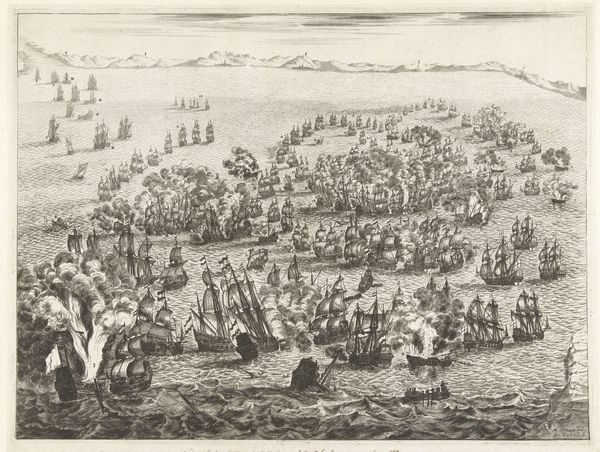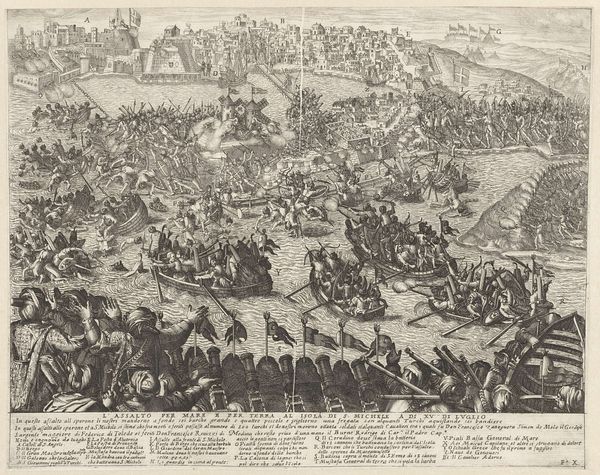
print, etching, engraving
#
narrative-art
#
baroque
# print
#
etching
#
old engraving style
#
figuration
#
line
#
genre-painting
#
history-painting
#
engraving
Dimensions: height 348 mm, width 476 mm
Copyright: Rijks Museum: Open Domain
Curator: This intricate engraving, created by Bartholomeus Willemsz. Dolendo around 1600-1601, depicts the "Slag bij Turnhout, 1597", or the Battle of Turnhout, currently held at the Rijksmuseum. Editor: My initial reaction is of controlled chaos. It's so densely packed with figures, yet there's a strange formality to the arrangement, like a choreographed dance of destruction. The etching marks on the figures provide texture while lending a feeling of great energy, perhaps conveying how powder from cannons might smoke during battle? Curator: I’m glad you mention the etching. The act of repetitive, skilled labor involved in its making contrasts sharply with the violence depicted. Printmaking in this era served a vital propaganda function. These kinds of prints were reproducible and would've been displayed widely to spread accounts of events and thus also a version of the associated politics. Editor: Absolutely. And consider the symbolic weight. Look at the placement of the commanders. Their elevated position emphasizes authority, a clear visual representation of hierarchy and power. I think that the symbols are a clear assertion of dominance over a defeated force. The very fact that they are all riding horses, a key source of kinetic and symbolic energy in paintings throughout the entire century. Curator: That elevated viewpoint also suggests a controlled dissemination of information, it allowed the printmaker to organize it with intentionality, so those reading it understand the story in one clear arc. Let’s also consider the cost of production. The paper, the ink, the artist's time all represents financial investment. This isn't just art; it's an investment in a very specific, material outcome. Editor: Right, the battle as spectacle and victory. I notice some visual continuities in conflict depictions, across cultures and periods. Battle scenes echo themes of courage, leadership, and the human cost of war—themes resonant across centuries. The artist makes use of very clearly readable lines that depict symbolic ideas of conquest to be easily printed, seen, and understood, just like any other broadside. Curator: Precisely. What strikes me is how this piece is much more than just pigment, paper and skilled artistry— it reflects specific socio-political currents. Editor: Indeed. It’s a confluence of cultural memory, embedded symbolism, and human experience distilled into a single, compelling image.
Comments
No comments
Be the first to comment and join the conversation on the ultimate creative platform.
